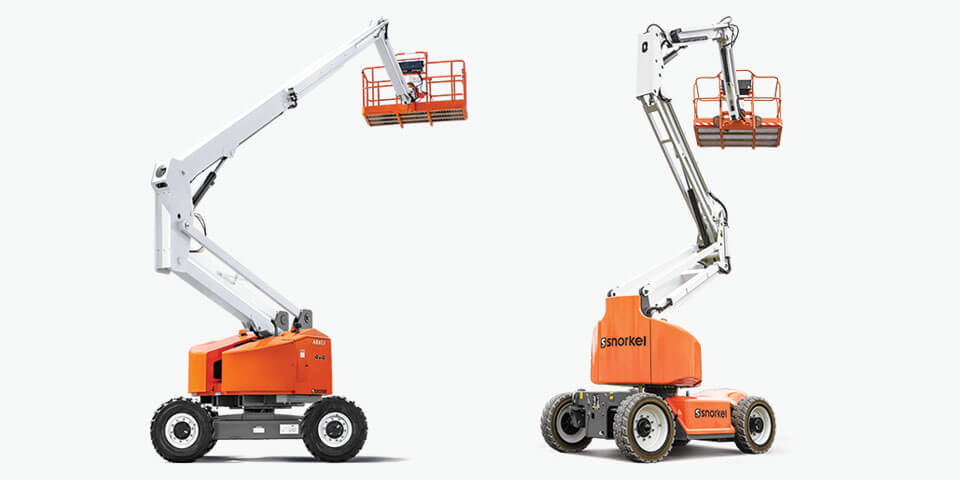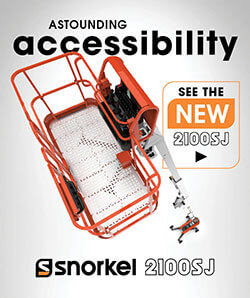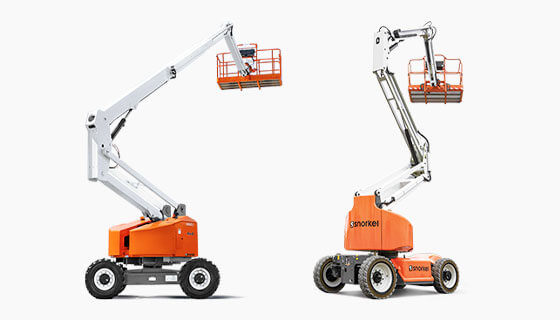More compact than telescopic booms, articulated booms are ideal for working at height in confined spaces. However, there is more than just working height to consider when selecting an articulated boom.
A key feature of an articulated boom is the capability to reach up and over obstacles. This is referred to as ‘maximum horizontal reach,’ showing how far forward the boom can reach, and ‘clearance height at maximum outreach’ — commonly referred to as “up-and-over” — which is the height of obstacles that the boom can reach over at the maximum horizontal reach.
A major difference between articulated booms is whether they have a single or double riser. The riser is the lower boom structure, which may be a single section, or two sections divided by a knuckle. A single riser boom will often have a greater stowed length and a greater horizontal reach than the double-riser design of the same final platform height. Conversely, the double-riser boom will often provide a larger up-and-over height than a single riser boom.

Many single-riser booms have a substantial amount of tailswing when the riser is down low. Tailswing is the distance beyond the edge of the tires that any structure impedes upon. Complications of tailswing include collision with items in front of the machine that may be obscured from the operator’s vision by counterweights, cowling or other structures. Convention centers and factory aisles are areas that favor the use of double-riser booms with zero tailswing, or any place with close structures. It’s worthwhile to note that both single- and double-riser booms tend to minimize or lose their tailswing or foreswing as the riser is elevated, a trick often used by operators to ensure they can rotate with less requirement of a spotter from the ground. Many worksites even require spotters for machines with tailswing to prevent damages when rotating the machine.
Opposite to tailswing is foreswing, which refers to structure that can rotate beyond the tires on the same end as the boom. Although it can be equally problematic, foreswing is generally more accepted because it is directly below the operator and in the line of vision. Foreswing can become a significant issue when an articulating boom is elevated up and over an obstacle, such as an airplane wing. The foreground structure of the middle knuckle can then become obscured by the wing and can collide with the aircraft. For this reason, many aircraft maintenance and assembly facilities choose to use a single-riser articulated boom.
Because of the additional cylinders, links, pins and controls, articulated booms are generally more expensive to produce than their straight, telescopic counterparts. Depending on the capacity, they are also generally heavier as well. But when compact size is necessary, they can operate more effectively in tight spaces, especially if the primary concern is maximum platform height.



